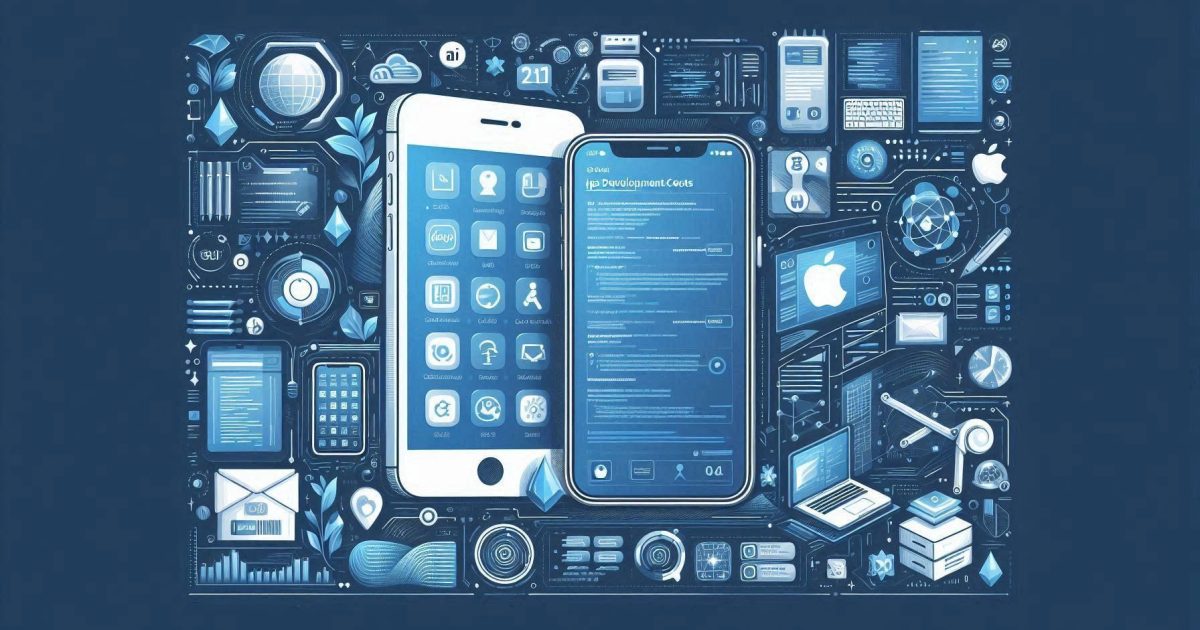In 2024, iOS app development is poised to evolve, bringing in new challenges, technologies, and cost factors. Whether you’re a startup looking to build your first app or a large enterprise upgrading existing solutions, understanding the costs of iOS app development will help you plan better. In this blog, we’ll dive deep into the various elements that influence iOS app development costs, trends to look out for in the future, and how businesses can optimize their investments.
Factors That Influence iOS App Development Costs in 2024
1. App Complexity
App complexity remains one of the primary drivers of cost. In 2024, apps are becoming increasingly sophisticated due to growing user expectations, AI-driven personalization, and immersive experiences. Apps can be categorized as:
- Simple Apps: Basic functionalities with few screens, like calculators or simple utilities.
- Medium Complexity Apps: These apps have more features, including third-party integrations, user authentication, and more detailed interfaces, like eCommerce or social networking apps.
- High Complexity Apps: These include on-demand apps like Uber or Airbnb, requiring extensive backend infrastructure, real-time capabilities, and integration with advanced technologies such as AR/VR or AI.
Cost Estimate: Simple apps can range between $20,000 to $50,000, medium complexity apps from $50,000 to $120,000, and high complexity apps can exceed $300,000 depending on various factors.
2. Team Size and Expertise
Hiring the right team is crucial for iOS app development. In 2024, the need for experts in areas like Swift, SwiftUI, CoreML, and augmented reality (ARKit) will continue to rise. You’ll need a combination of:
- iOS developers
- UI/UX designers
- QA testers
- Backend developers
- Project managers
The experience and expertise of your team directly influence the costs. Hiring in-house talent might cost more than outsourcing to development agencies with experienced iOS developers. Also, the choice of onshore, nearshore, or offshore development impacts cost substantially.
Cost Estimate: Onshore teams in North America can charge between $100 to $150 per hour, while offshore developers may cost between $30 to $60 per hour.
3. UI/UX Design Complexity
In 2024, user experience will be a major determinant of an app’s success. With Apple consistently pushing the boundaries of interface design with newer versions of iOS, users expect apps to be sleek, responsive, and intuitive. A well-designed app with complex animations, custom graphics, and a highly polished UI can significantly drive up costs, but it also boosts user engagement and satisfaction.
Cost Estimate: A basic design could cost around $5,000 to $10,000, while a highly customized and interactive design might go up to $30,000 or more.
4. Third-Party Integrations
Modern iOS apps often rely on third-party APIs for features like payments, maps, analytics, and social media sharing. The more integrations required, the higher the cost. However, these integrations can provide essential functionality without building everything from scratch, thus saving development time in the long run.
Cost Estimate: Integrating common APIs like payment gateways or social media login could cost around $5,000 to $15,000 depending on the complexity.
5. Backend Infrastructure
For apps requiring cloud databases, real-time syncing, or user authentication, a robust backend is essential. Building a secure, scalable, and efficient backend architecture adds to both development time and cost. In 2024, with increased demand for real-time functionalities, AI-powered systems, and better security, backend development costs are expected to rise.
Cost Estimate: Backend development can range between $15,000 and $100,000 depending on the complexity and infrastructure needs.
6. Maintenance and Updates
After launching the app, maintaining it is critical. iOS updates, user feedback, and changing market conditions necessitate regular updates to fix bugs, enhance security, or introduce new features. Businesses in 2024 must budget for post-launch services, as neglecting maintenance can lead to performance issues and negative reviews.
Cost Estimate: App maintenance typically costs 15-20% of the original development cost annually.
7. Testing and Quality Assurance
Testing is essential to ensure that the app runs seamlessly across different devices and iOS versions. Automated testing, manual testing, and beta testing are standard practices to ensure an app’s reliability.
Cost Estimate: Testing typically constitutes 20-25% of the overall app development cost.
Trends Affecting iOS App Development Costs in 2024
1. AI and Machine Learning Integration
Apps leveraging AI and machine learning, especially with Apple’s CoreML, will see increased demand in 2024. From personalized user experiences to AI-driven insights, these technologies require specialized skills and tools, significantly increasing development costs.
2. AR/VR and the Metaverse
The rise of augmented reality (AR) and virtual reality (VR), driven by Apple’s ARKit and potential AR glasses, will push businesses to adopt immersive experiences. This will demand more from iOS developers, particularly in industries like gaming, education, and retail.
3. App Security
With rising concerns over data privacy and security, implementing strong encryption, biometric authentication, and secure data management will become more expensive. iOS apps must also comply with evolving regulations like GDPR and CCPA, adding to development costs.
4. Wearable Integration
As Apple Watch and other wearable devices gain popularity, iOS apps will increasingly need to offer seamless integration with wearables. This requires additional resources and expertise, contributing to higher development costs.
How to Optimize iOS App Development Costs
- Plan the App Features: Start by identifying core features and functionalities. Avoid including unnecessary or complex features that may inflate costs unnecessarily.
- Choose the Right Development Partner: Select a development team with proven experience in iOS app development. Emperor Brains, for instance, specializes in building cutting-edge mobile solutions that optimize both cost and performance.
- Leverage Existing Technologies: Instead of developing everything from scratch, use existing technologies, SDKs, and frameworks to accelerate development and minimize costs.
- Iterative Development: Opt for an MVP (Minimum Viable Product) approach, which allows you to launch a basic version of your app first, gather feedback, and then add more features based on user demand.
Conclusion: iOS App Development Costs in 2024 – Emperor Brains Perspective
iOS app development in 2024 and beyond will continue to be shaped by technological advances, user demands, and emerging trends like AI, AR/VR, and security enhancements. While costs might seem daunting, strategic planning and partnering with the right development team can make all the difference. Emperor Brains, a leader in mobile app development, offers expert solutions tailored to your needs, ensuring that your iOS app is both cost-efficient and future-ready.
At Emperor Brains, we specialize in providing top-tier iOS development services that bring your vision to life. Whether you’re building a simple utility or a complex enterprise-level application, our team is equipped with the expertise to help you succeed. Visit us at emperorbrains.com to learn more about our services and how we can assist with your next big project.

